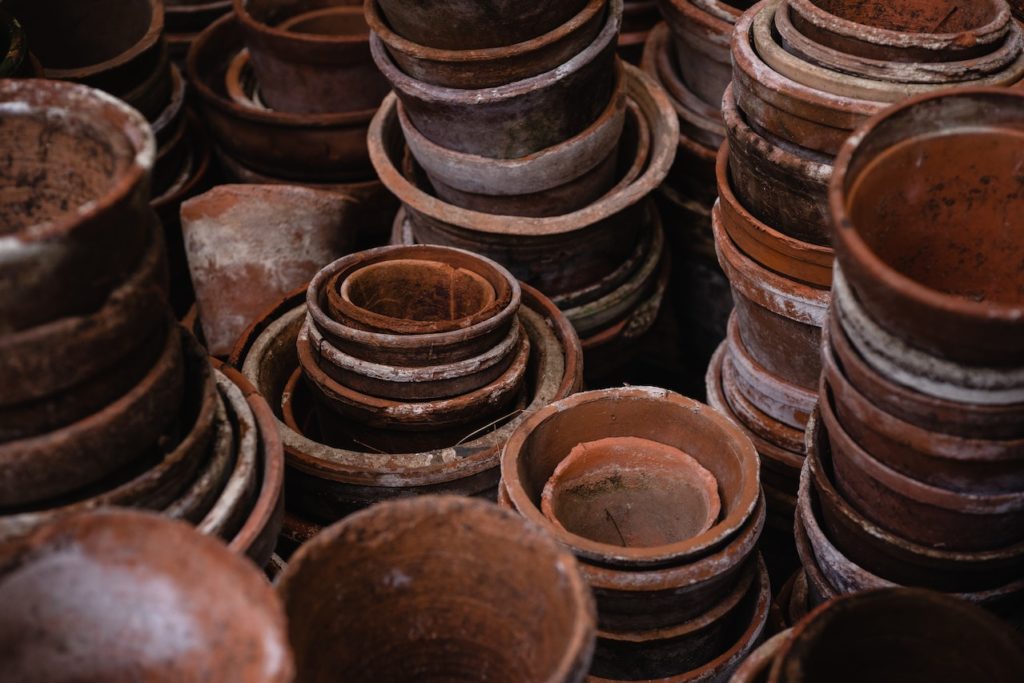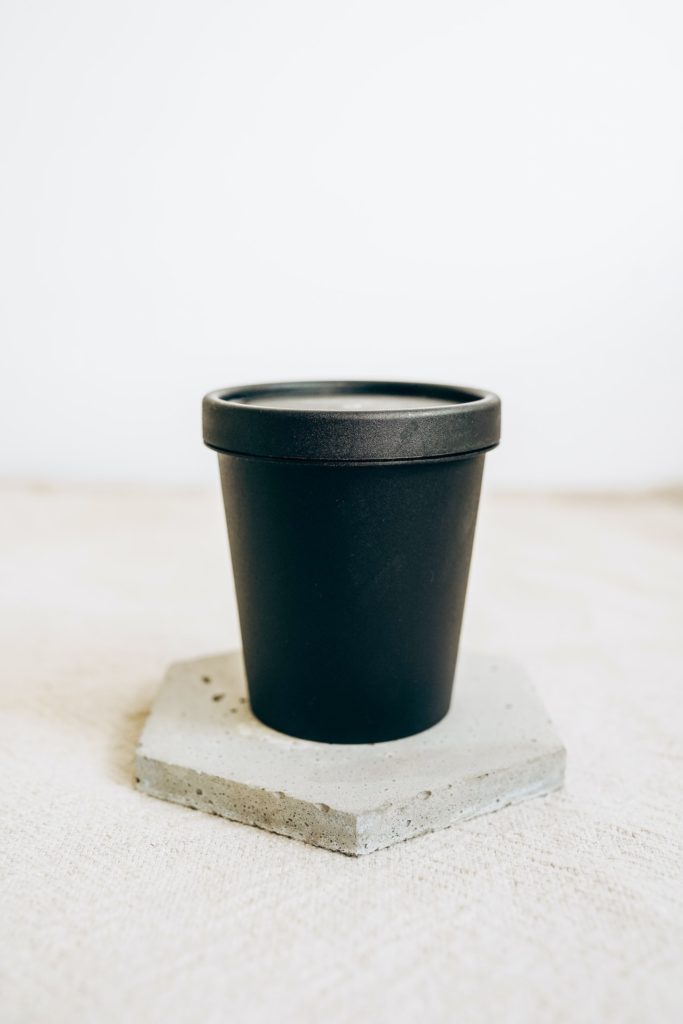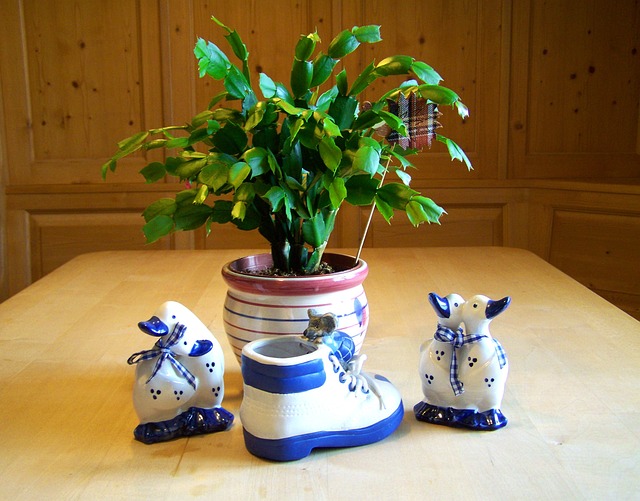Christmas cacti have been around since the 1800s. It emerged as the hybrid of the “Thanksgiving cactus” and the “Easter cactus”. The first hybrids bore cherry-red flowers that bloom from around November to January. Today, the Christmas cactus became a popular houseplant and a great gift for the holiday.
One common misconception about the Christmas cactus is that it thrives like other cacti. Christmas cacti is actually not a true cactus so it’s not right to assume it requires the same care as the other true cacti. With proper care, it can live for up to 40 to 50 years. How do we properly care for this plant? Let’s start with the right pot.
Factors to Consider in Choosing the Best Pot for Christmas Cactus
In this article, we’ll give you three factors to consider in choosing the best pot for your Christmas cactus.
Choose the Best Pot Size
First, you must consider the size of your Christmas cactus. Choose a pot that would accommodate the natural growth of your plant. If your Christmas cactus plant currently measures 2 inches in diameter, choose a pot that measures 4 inches. The pot size should be 2 inches wider. Christmas cactus thrives well with moderately crowded roots so don’t choose a pot that’s too big either.
Choose a Pot With Proper Drainage
Drainage is super important in choosing the best pot for your Christmas cactus. It drains excess water that causes root rot. Roots need oxygen as any living organism does. When the soil doesn’t drain the water quickly, the stagnant water blocks the roots from absorbing oxygen. Plant roots in general require respiration that allows the conversion of glucose into cellular energy. This cellular energy is then utilized for metabolic processes such as taking up water and nutrients your Christmas cactus require.
Choose the Best Pot Material
Terra cotta or unglazed clay makes the best material for a pot. Its porous characteristic allows water to freely drain water to avoid the problem of root rot. The terra-cotta pot also promotes good aeration around the Christmas cactus’ roots. When it comes to aesthetics, terra cotta pots vary in styles and sizes suitable for your needs. Check out this stunning terra cotta pot perfect for your Christmas cactus.

Terra cotta pots are heavier than other types of pots. When using terra cotta pots for your Christmas cactus plant, it requires gentle handling as it is prone to breaking. The freeze and thaw cycles can also break the pot. To prevent this problem, use things such as stones or bricks to elevate the pot. It’s not a problem for Christmas cactus as it usually stays indoors.
Related article: Can Christmas Survive Outside?
Best Alternative Pots for Christmas Cactus
As mentioned, terra cotta pots are the recommended pot for Christmas cacti. However, you can also use other pots such as plastic pots and ceramic pots as good alternatives for terra cotta pots. Keep on reading as we will dive deep into each material.
Plastic Pots
Unlike terra cotta pots, it’s easier to move plastic pots around without worrying about breaking them easily. The plastic material is more durable compared to the terra cottas’. However, plastic materials can be easily knocked down so make sure to place these pots with Christmas cactus in a safe location.

If you use plastic pots for your Christmas cactus, water it more frequently as it doesn’t allow air circulation as much as the terra cotta pots provide. As mentioned earlier, aeration plays a crucial part in the plant’s water and nutrients absorption. Be sure to water your Christmas cactus as needed but allow the soil to dry out slightly between waterings.
In terms of appearance, plastic pots come in a variety of styles, colors and sizes. Though terra cotta pots offer more aesthetics, plastic pots cover a wide range of colors that can match any decor you have at home like these Joojeers Extra Thick Heavy Duty Plastic Plant Pots.
Ceramic Pots
Ceramic pots are the best alternative for terra cotta pots. It allows water to drain compared to plastic pots. Thanks to their porous material, it allows good aeration for your Christmas cactus roots. This helps prevent root rot and other problems caused by poor drainage. Ceramic pots also offer more aesthetics. They come in a wide range of styles and colors.
The aesthetic of this ceramic Embossed Leaves Stoneware Pot will suit well for your Christmas cactus at home. Take note that ceramic pots are not as porous as terra cotta pots. Unlike terra cotta pots, ceramic pots do not allow quick water drainage. When you use ceramic pots for your Christmas cactus, make sure that you allow the soil to get slightly dry out between waterings.
Fiberglass Pots
Have you heard about fiberglass pots before because I didn’t. This type of material is relatively new and provides significant benefits over conventional pots. Fiberglass pots are durable, lightweight and resistant to fading and cracking regardless of the weather and temperature. They also allow a good amount of air circulation in the plant’s roots.
Fiberglass pots usually come in bigger sizes. They’re perfect if your Christmas cactus reaches its full length like this Fiberstone Matte White Planter. These types of pots are a bit pricey compared to traditional pots. However, they offer impressive durability and they last long while looking great. If you’d like to invest in long-term pots, fiberglass pots make a good option.
Additional Pot Tips
As mentioned earlier, choosing the right size for a pot is crucial. A pot that is too large for your Christmas cactus holds too much water that would cause root rot problems. On the other hand, choosing a pot that is too small for your plant prevents the roots from spreading out. It will impede the growth of your Christmas cactus because it restricts the plant’s water and nutrient absorption.
Once you see that the soil is dry, water your Christmas cactus. Ceramic pots slowly dry out compared to terra cotta or clay pots so you don’t have to water your plant more often. Ceramic and terra cotta pots are prone to cracks during winter. To prevent this, wrap your pot using a burlap sack or by keeping your pot indoors.
Always empty the saucer to prevent stagnant water around your pot. Christmas cacti belong to the succulent group that’s why they can’t tolerate a mushy environment. Remember also that Christmas cactus doesn’t thrive in extreme drought like the true cacti. Water it once the soil feels dry.
Related article: Cactus Root System: 6 Things That Will Surprise You!
When to Repot Christmas Cactus
The best time to repot your Christmas cactus is when you see its root bounds. Root bounds usually happen every three to four years. It exhibits similar signs when your plant is underwatered. Your Christmas cactus is ready for repotting if you see the following root bound signs:
- Roots start to come out of the drainage holes
- Stem becomes yellow or brown
- Soil turns hard or the top layer turns dry
You can’t just transfer your Christmas cactus to a new pot any time of the year. It’s best to do this after the plant finishes its blooming season because the buds would fall off if we insist on repotting it. February and March are the best months to repot your Christmas cactus.
How to Repot Christmas Cactus
We need to repot Christmas cactus to replenish the nutrients the soil lost over time. Usually, potting soil loses its nutrients after two years. Adding organic matter like compost helps the soil to retain nutrients. How do we repot Christmas cactus?
- Choose a slightly larger pot than your current pot. Make sure the pot is two inches larger in diameter than your Christmas cactus.
- Make sure that the pot has proper drainage.
- To improve the drainage, add a layer of pebbles or gravel to the bottom of the pot,
- Use a potting mix that is specifically made for cacti and succulents and fill the pot with it.
- Remove the Christmas cactus from its pot gently. Be careful not to damage the roots of your Christmas cactus.
- Using your finger, loosen the roots of your plant.
- Gently place the Christmas cactus in the new pot and fill it with the appropriate potting mix.
- Thoroughly water the Christmas cactus and place it in a location with shade, not with direct sunlight. The ideal temperature for Christmas cactus is from 70 degrees to 80 degrees Fahrenheit.
- Fertilize your Christmas cactus once a month. Compared with other plants, a Christmas cactus requires a high amount of magnesium.
FAQs
Do Christmas Cactus Like Clay or Plastic Pots?
Christmas cactus prefers clay pots. Clay pots offer better air circulation to your plant’s roots than plastic pots. Plastic pots retain more moisture than clay pots. Clay pots also help regulate soil temperature.
How do I Know if My Cactus Needs a Bigger Pot?
When you see roots coming out from your pot’s draining holes, that’s the time you’ll know it needs a bigger pot. This means that the roots have filled up the pot and the plant is no longer able to grow properly.
Conclusion
In choosing the best pot for Christmas cactus, you need to consider three things. First, the pot should be the right size. It should be two inches bigger than your Christmas cactus diameter. Second, the pot material should allow good air circulation for your Christmas cactus’ roots. Terra cotta or clay pots are recommended. Most importantly, the best pot should have draining holes to prevent root rot.


2 thoughts on “Best Pot for Christmas Cactus”